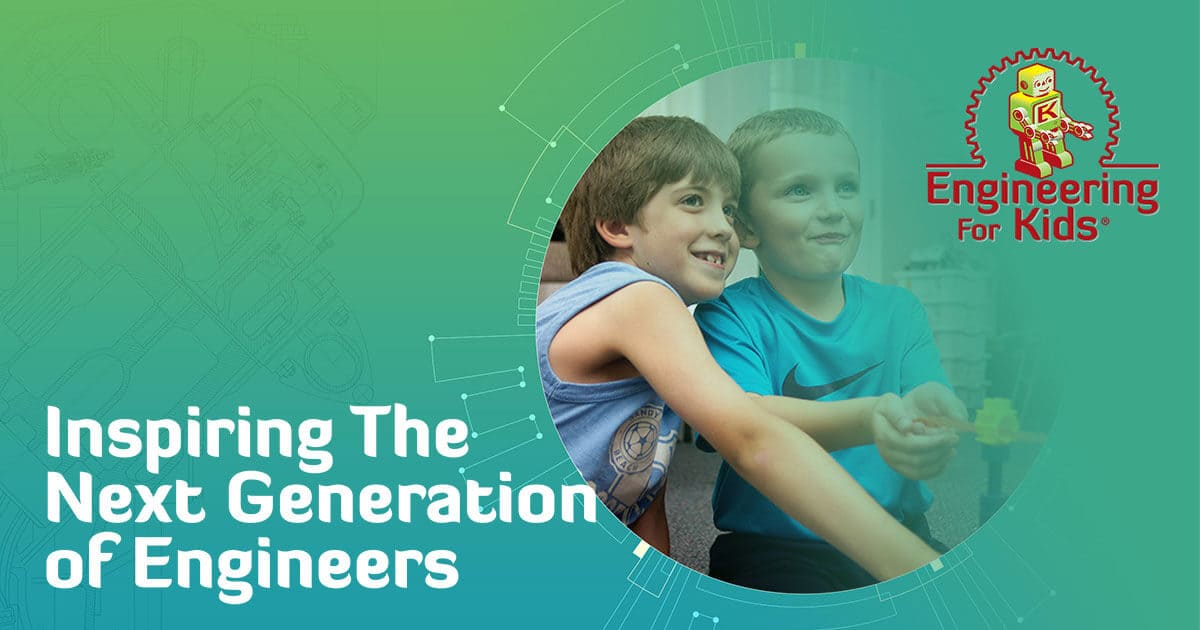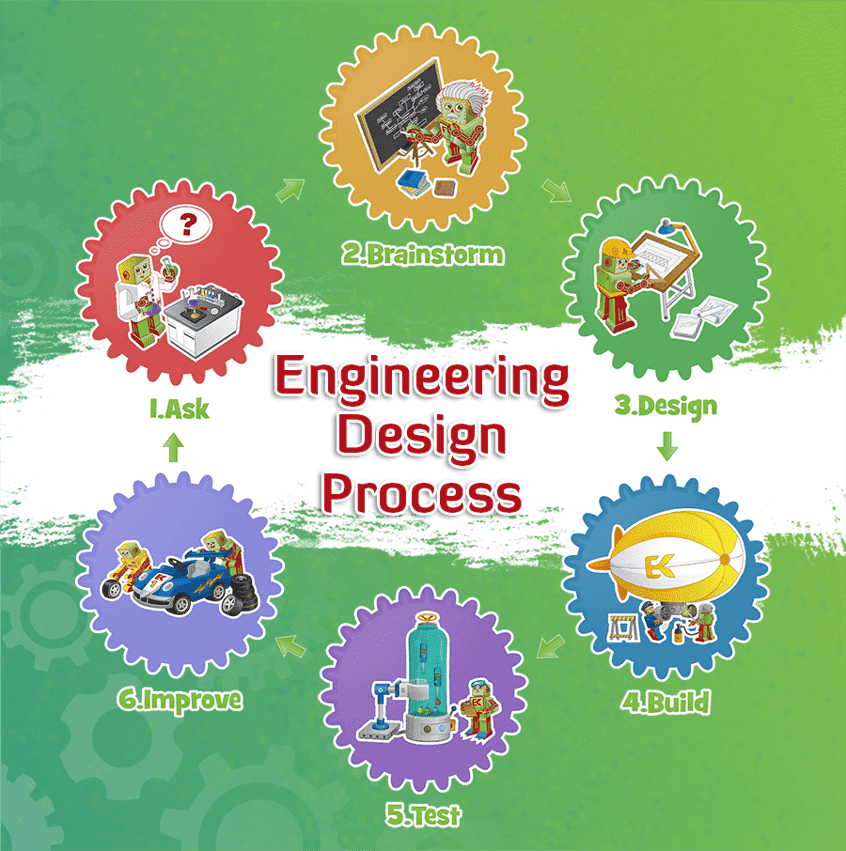
Here at Engineering For Kids, the engineering design process is at the core of everything we do! But did you know you can apply this problem-solving tool to problems outside of engineering?
What is the Engineering Design Process?
The engineering design process, by definition, is a series of steps that engineers use to find a solution to a problem. These steps include: defining the problem, brainstorming solutions, designing and building a prototype of the solution, testing the solution, and improving it.

Although the name can be misleading, this process isn’t strictly dedicated to engineering. If you have ever encountered a problem you’ve needed to solve then designed, tested, and improved your solution to make it better, then you have applied this process to your life!
Solving Everyday Problems Using the Engineering Design Process
While it’s not something you may actively think about when you’re handling everyday problems, you’d be surprised to know this process is utilized in plenty of your daily activities!
- Working in group projects. Group projects aren’t only for school-aged children — they’re actually quite prevalent in the workforce! Have you found yourself in a scenario where you need to work with a colleague to get a job done? Perhaps it’s developing a new internal process to work more efficiently or creating a new product to offer your customers. Either way, you and your team will need to follow the engineering design process to solve your problem!
- DIY home projects. Here’s just one scenario: You have a brand new, beautiful outdoor patio. But you realize you have no seating! So you find pallets from the local hardware store and build them yourself. However, once you’ve built your benches, you think, maybe some back support is needed! And what about cushions, too? You can apply this thought process to many scenarios. You may not have realized it at the moment, but through trial and error, you identified a problem, considered the possible solutions, and developed and implemented improvements.
- Writing a paper. You may be familiar with the writing process, which generally includes prewriting, drafting, revising, editing, evaluating, and publishing. Believe it or not, this isn’t too different from the engineering design process! Any writing assignment has a problem that the writer needs to address for the reader. Once the essay is written, it’s time to evaluate (or improve) and revise the work.
- Planning dinner for your family. Picture this: it’s getting close to dinner time and you don’t have anything yet in the oven. You consult your pantry to see what you have left and plug your ingredients into an app that can help find recipes. You recognize some constraints, i.e. which recipes take too long and others you know your kids won’t eat. You choose something you hope will please most of your family, cook the meal and sit down for dinner. You discuss if it’s missing anything — your child suggests some extra seasoning. Then voila, it’s perfect!
Related: Laptops Under $400 For Elementary and Middle School Distance Learning
How Engineering For Kids Can Help!
Here at EFK, we strive to bring engineering, science, math and technology to kids ages 4 to 14 in a fun and challenging way. This includes teaching them all aspects of the engineering design process to better equip them in their STEM studies and beyond! Contact your local Engineering For Kids to learn more about what programs we have available.




